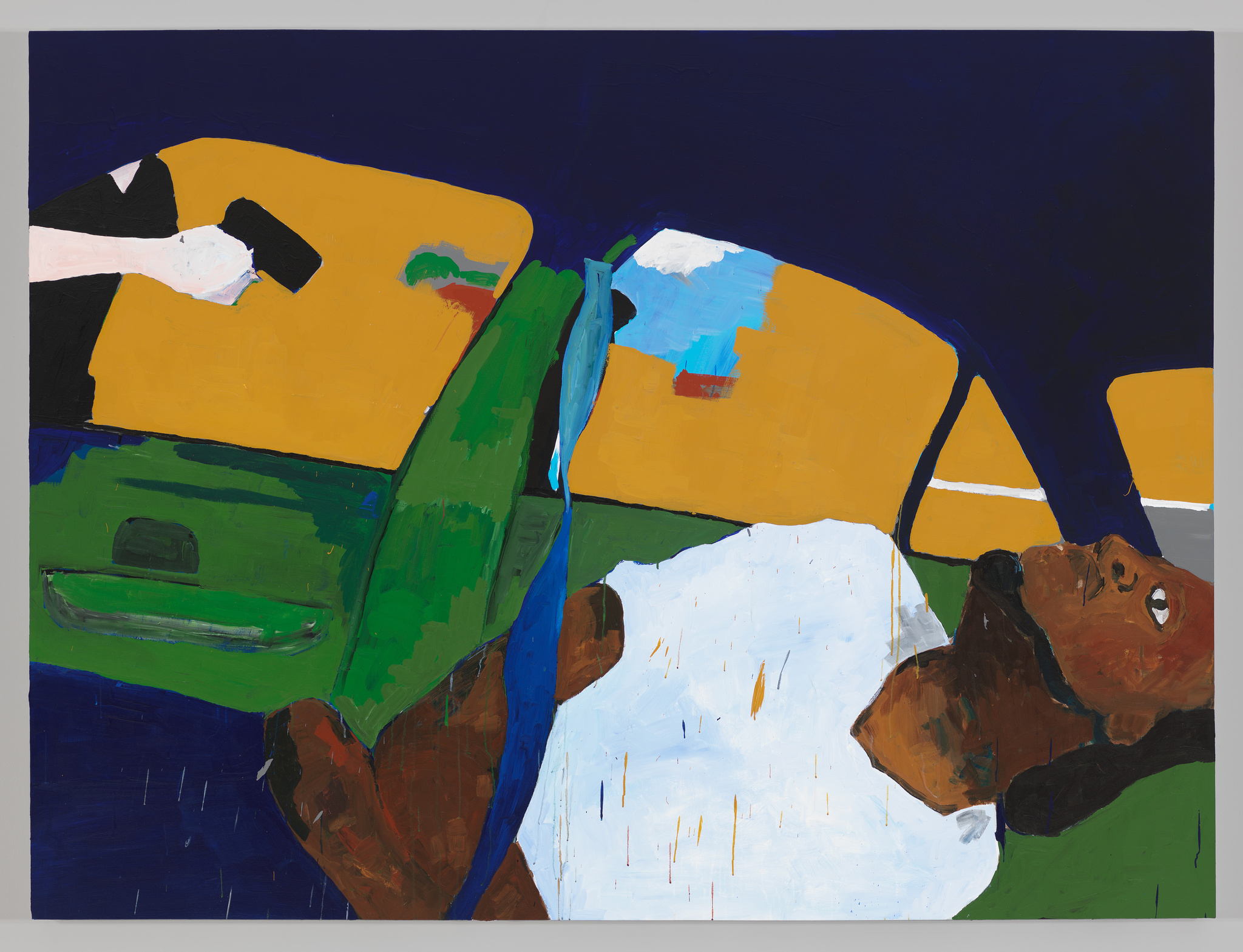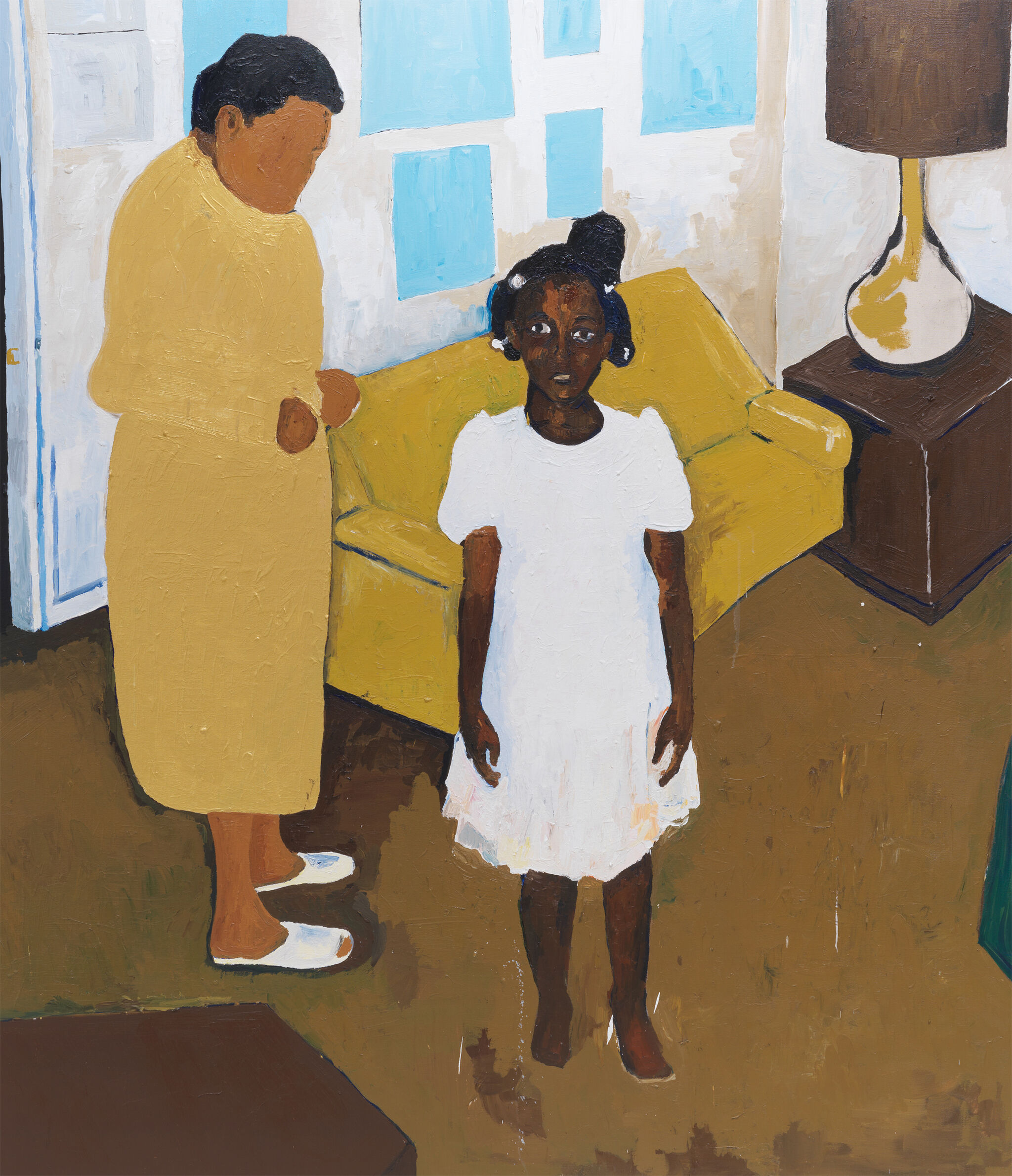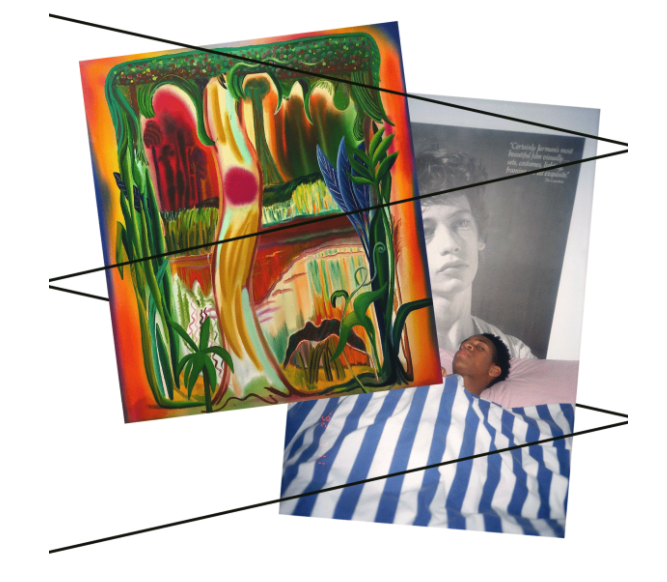THE TIMES THAY AINT A CHANGING, FAST ENOUGH!(2017) is an acrylic painting on canvas. At 6 by 8 feet, the painting is slightly larger-than-life size. In limited, opaque, and vibrant hues,THE TIMESdepicts a moment of the 2016 extrajudicial murder of Philando Castile, a thirty-two year old Black man. Composed from the perspective of the cell phone footage taken by Castile’s girlfriend, Diamond Reynolds, the scene appears suspended between figuration and abstraction, characteristic of Taylor’s style. Castile is foregrounded inside of his car. The roof of the car is a near solid shade of midnight blue. The doors and seat share an olive green intensity. Castile’s body, outfitted in a white tee shirt, lies in repose. His dark brown arms are crossed and his midnight blue panted legs press together into a small pool of ocean. While Castile was actually sitting in the front seat when killed, he is portrayed lying so far back his head reaches the rear windshield. The dual toned blue seatbelt, nowhere close to the shoulders or core it is meant to protect, twists like a ribbon in flight above him. Not only indicating the rolled-down position of the windows, this detail is depicted as if the only animated body in the scene is a too-loose seatbelt.
Castile’s face—lips pressed together, chin tilted slightly up, and in profile—is cradled by a thin black beard and a black pillow-like shadow curving the length of his neck. His one eye, interpreted powerfully and plainly, white sclera and black iris, peers up and slightly out toward the viewer. There is no blood and there is no viscera. Thin streaks and small splotches of yellow, green, and blue trail and scratch his white shirt, curled brown hands, and legs into slight imperfection.
Visible to the left and outside of the car—viewed through the passenger side window—is a cropped, white police officer. Pale neck, black shirt, one shoulder, one arm, one fist—fingers indistinct—wrapped around the grip of a black gun.
The roof of the car and the perspective of the viewer cut off the officer’s head. A mostly consistent mustard yellow opaque wash of color with small breaks in consistency appears through the three passenger side windows, as well as through a sliver of the rear windshield outside. To the right of the front window, a green scoop and a red blotch sit atop a jagged patch of warm grey. In the upper left corner of the backseat window, the stretch of mustard is fractured by a clip of light blue sky, a partial cumulus cloud, perhaps the brick red flat of a roof, and a small black patch, hinting a shadow.


